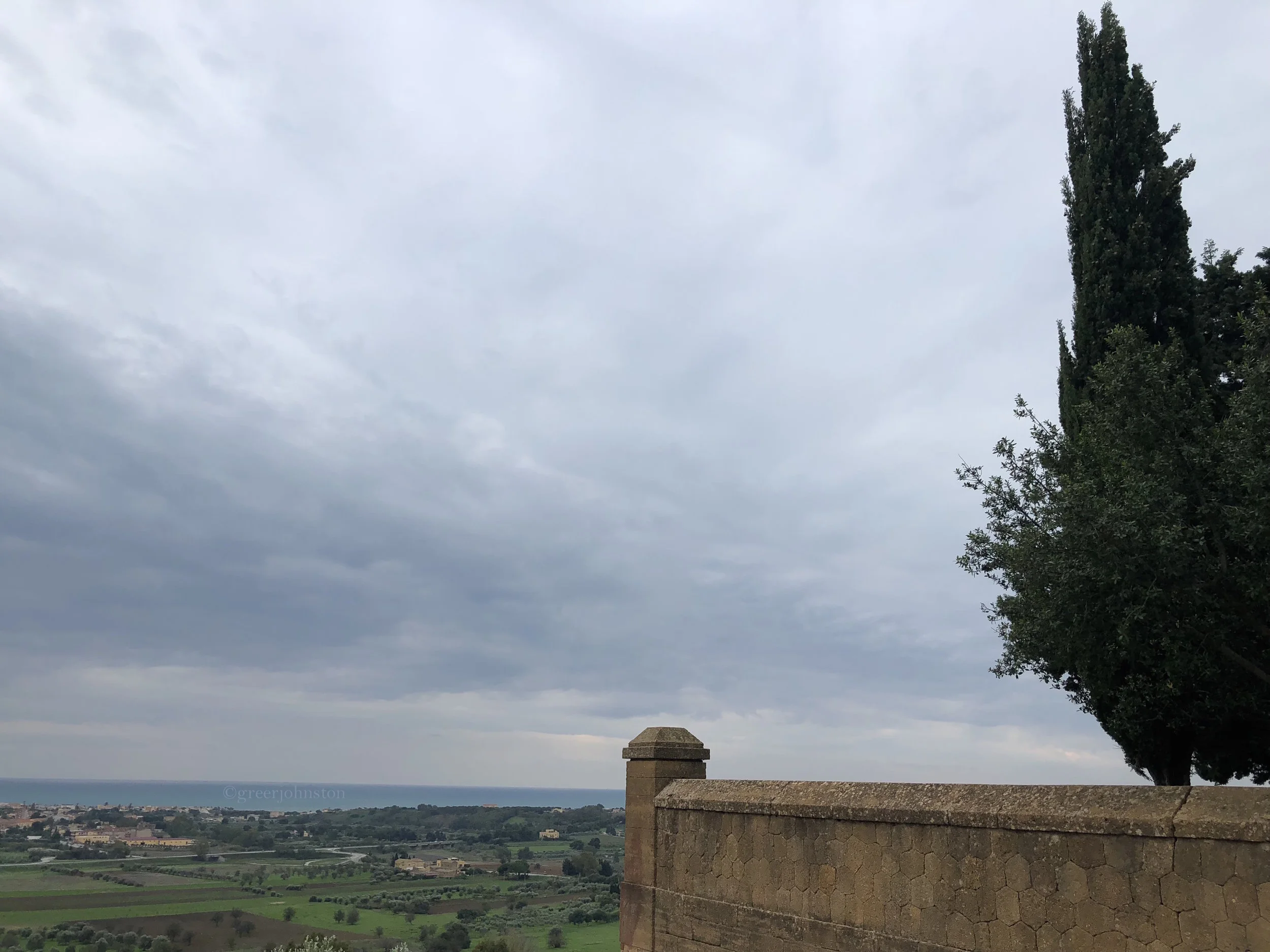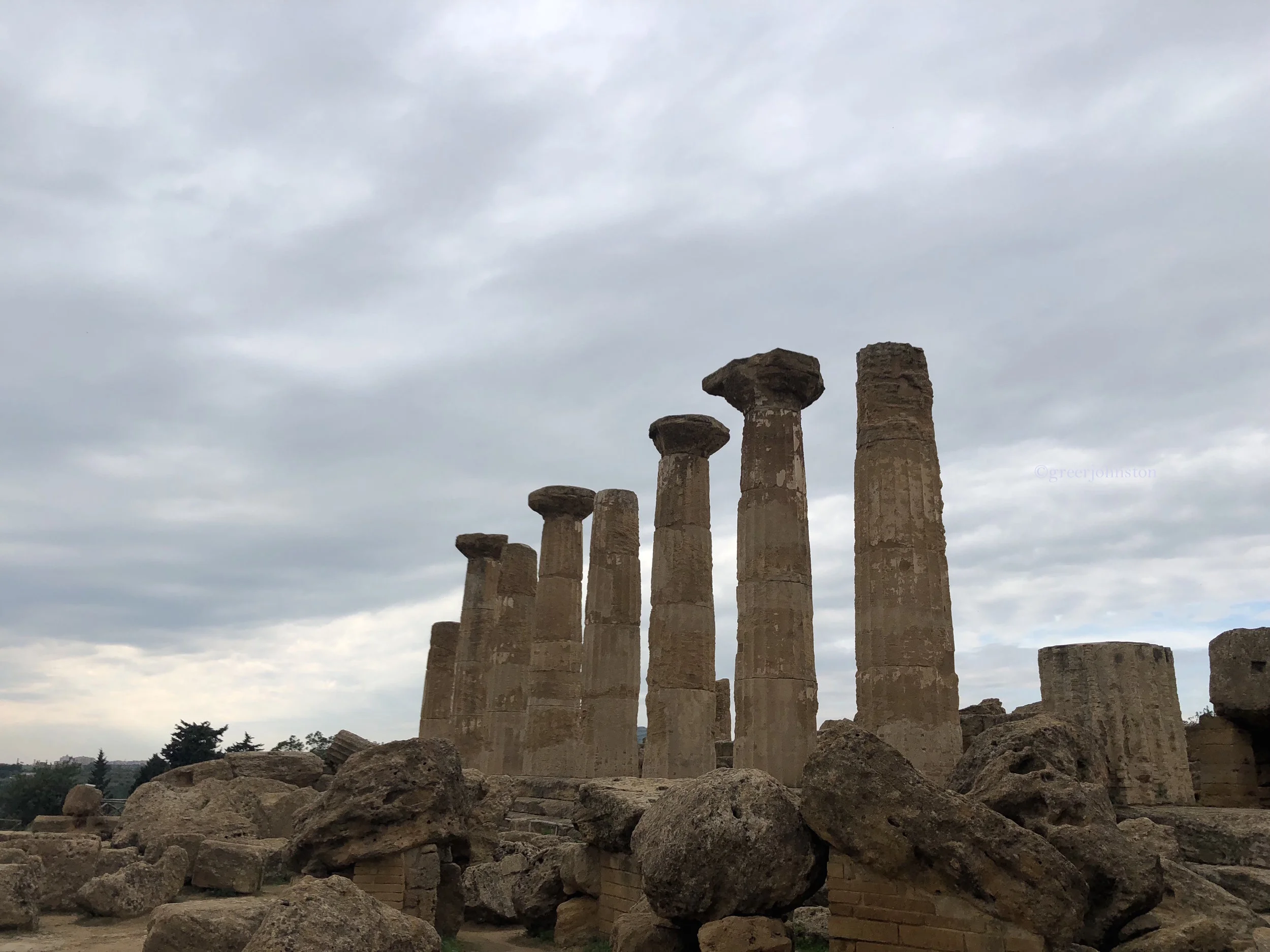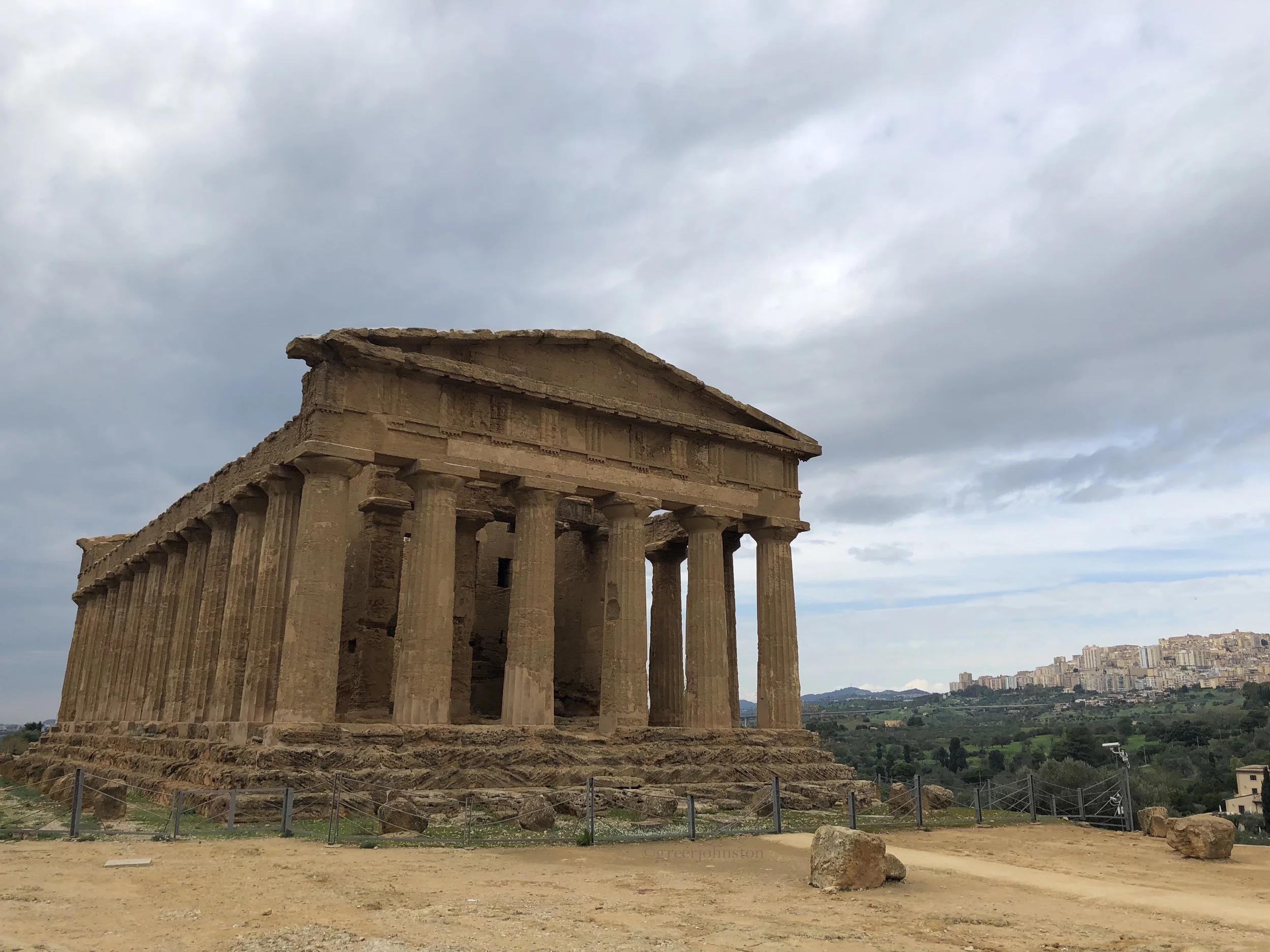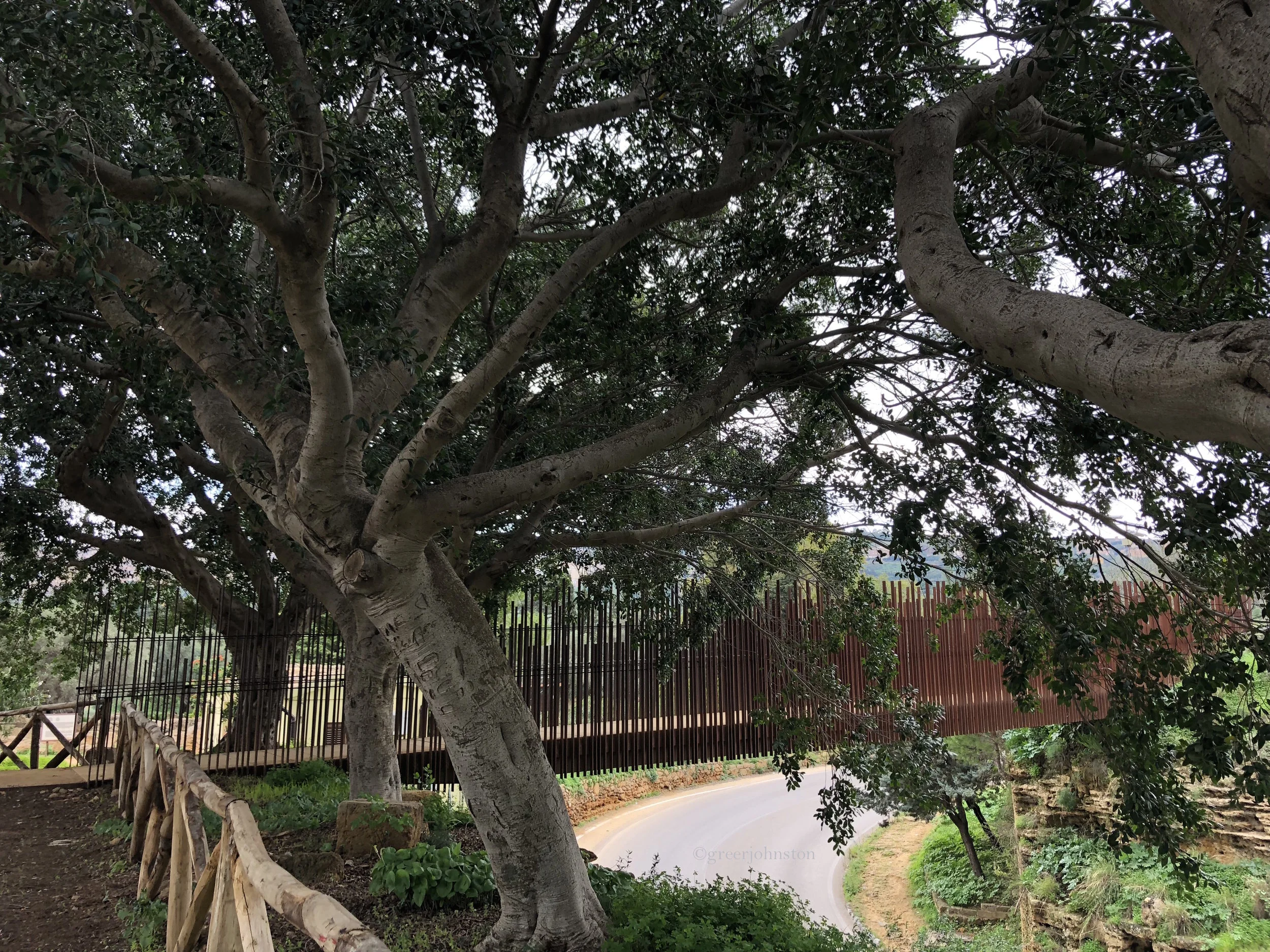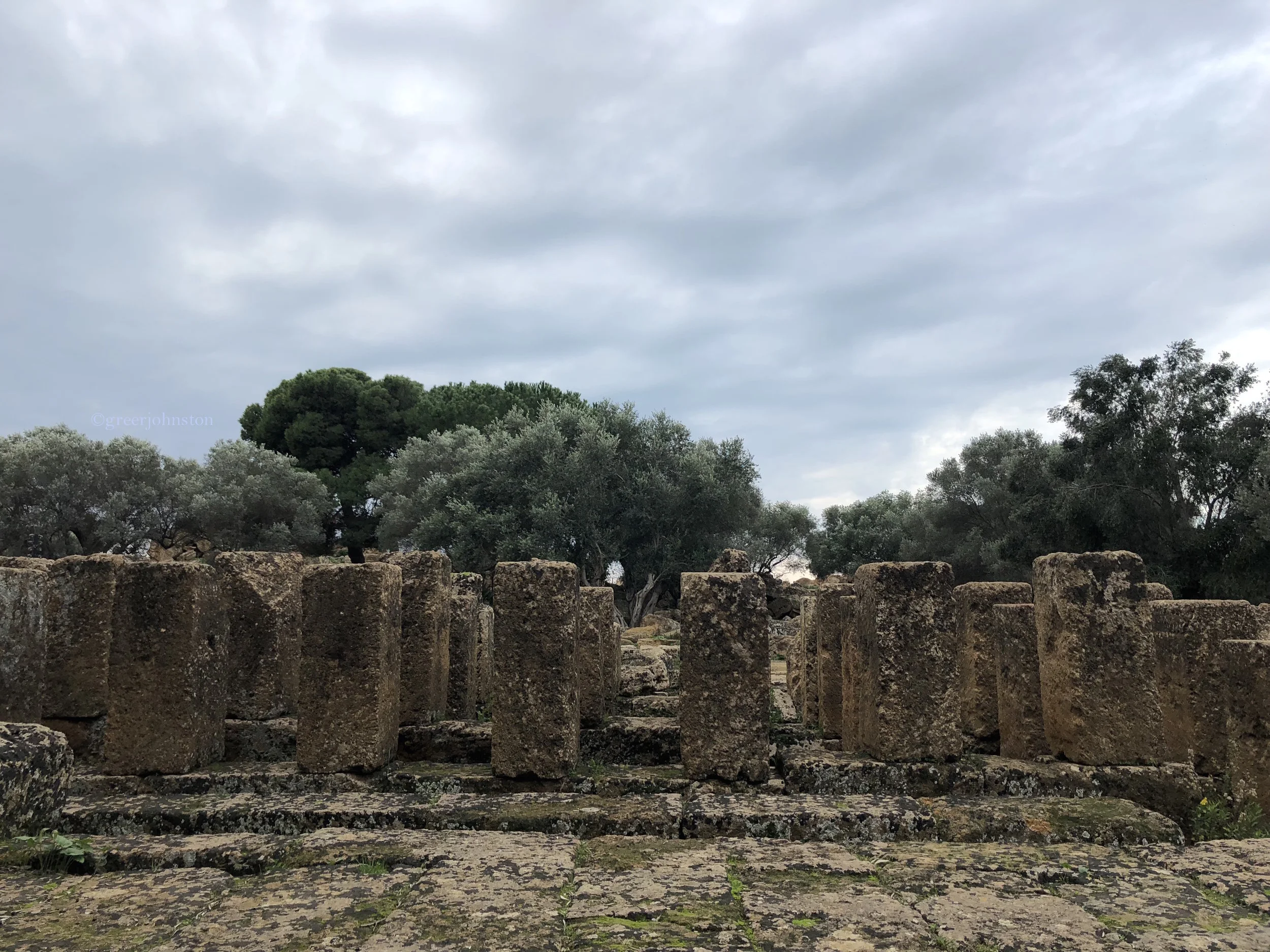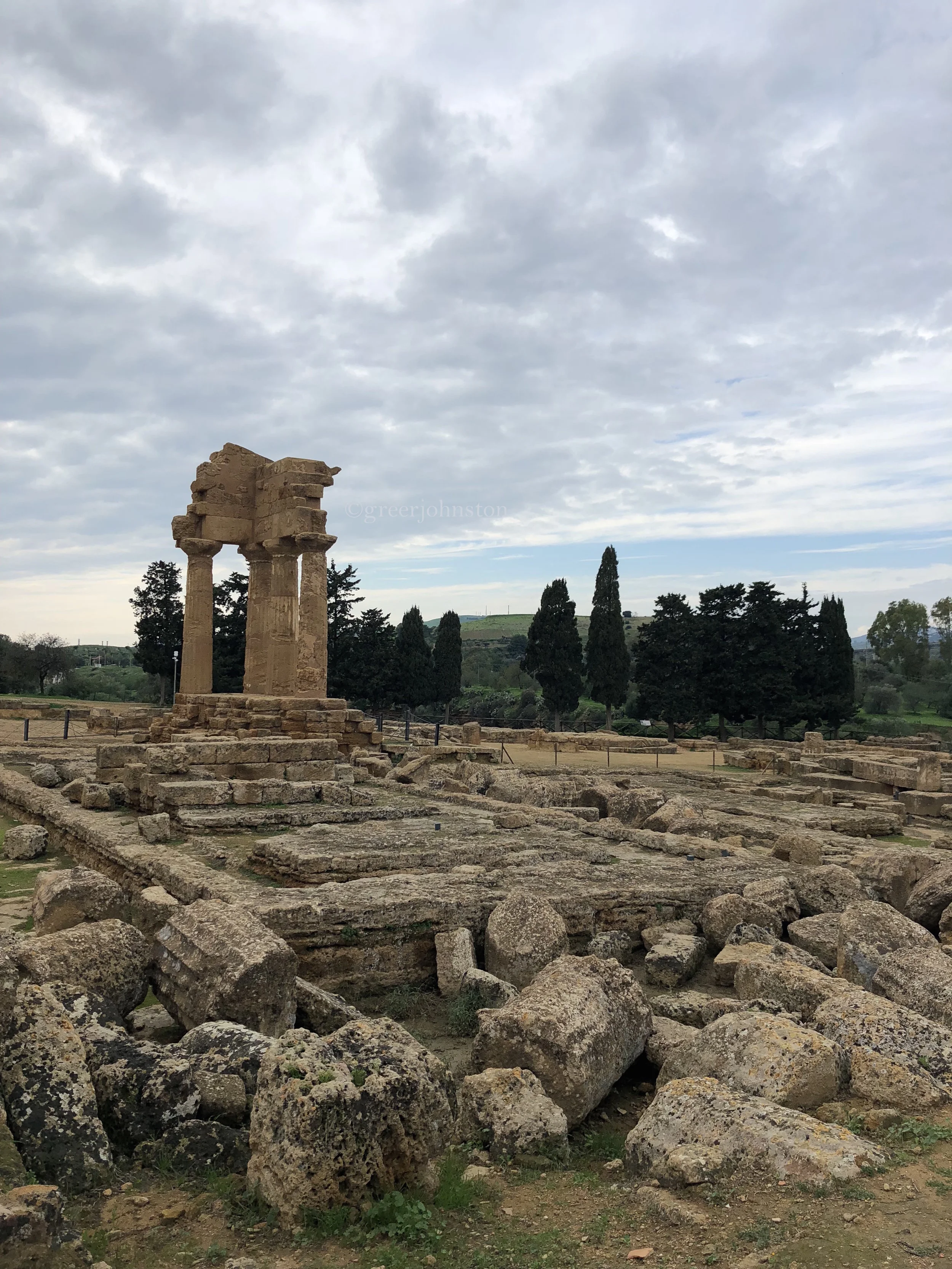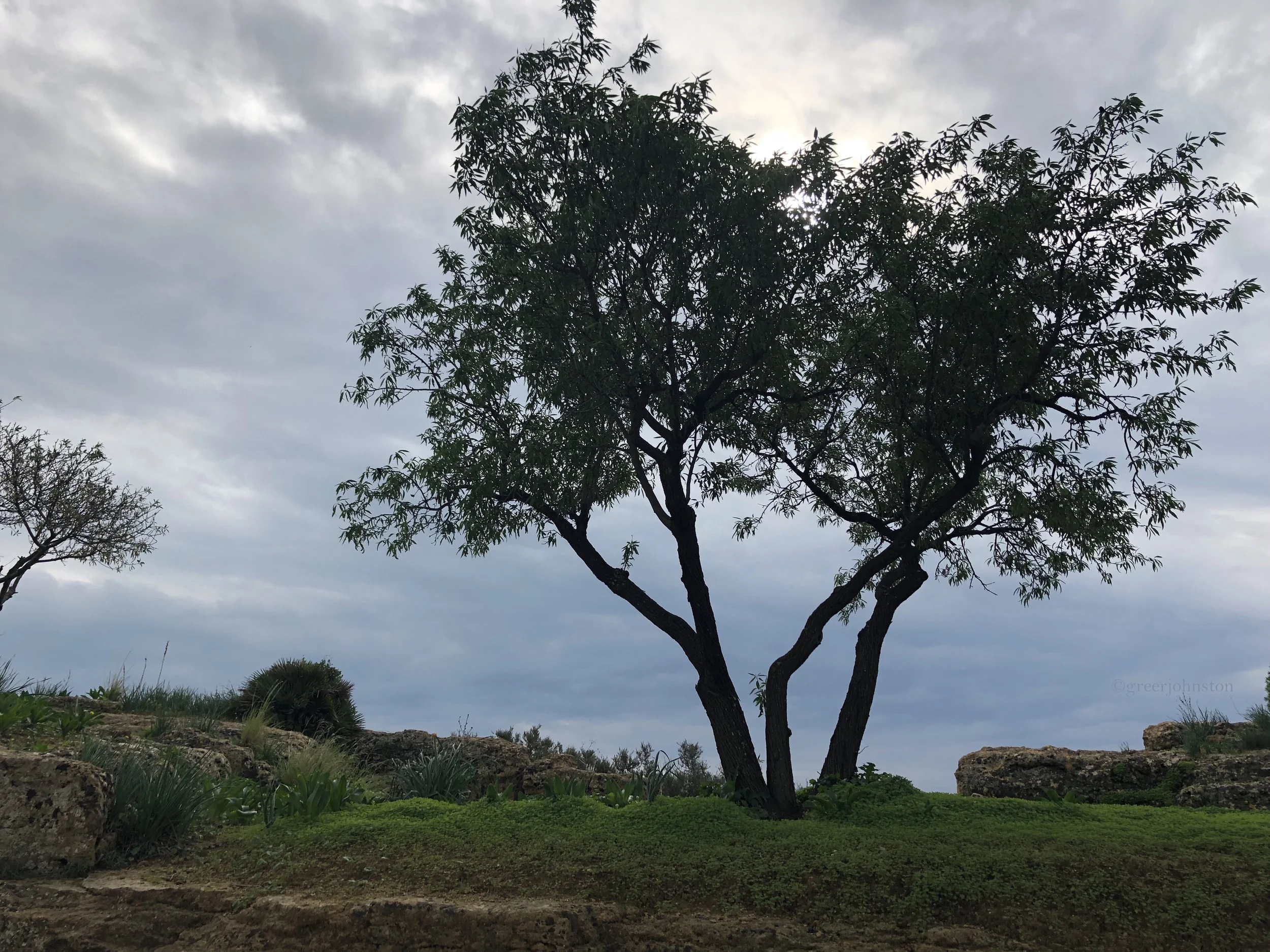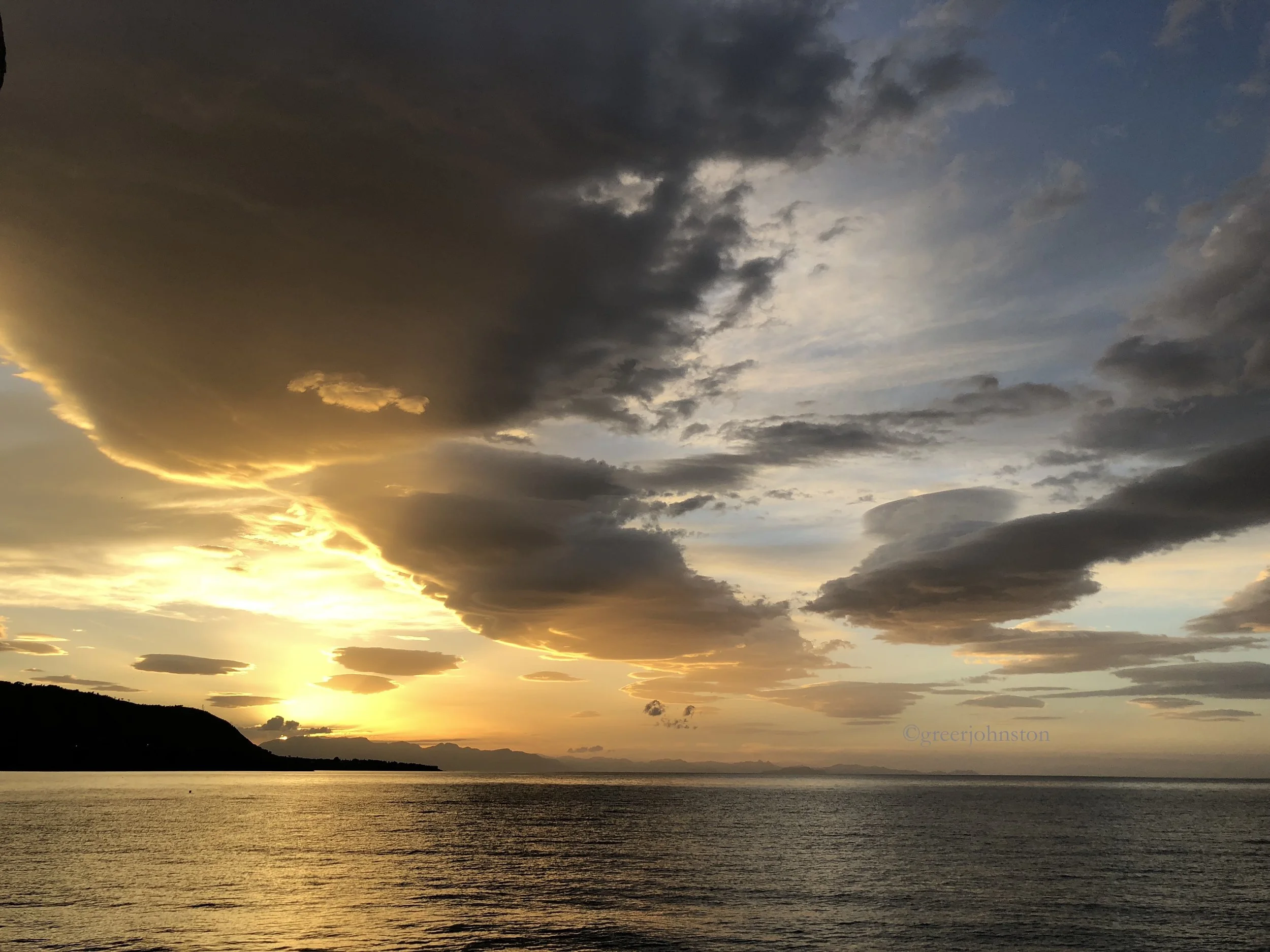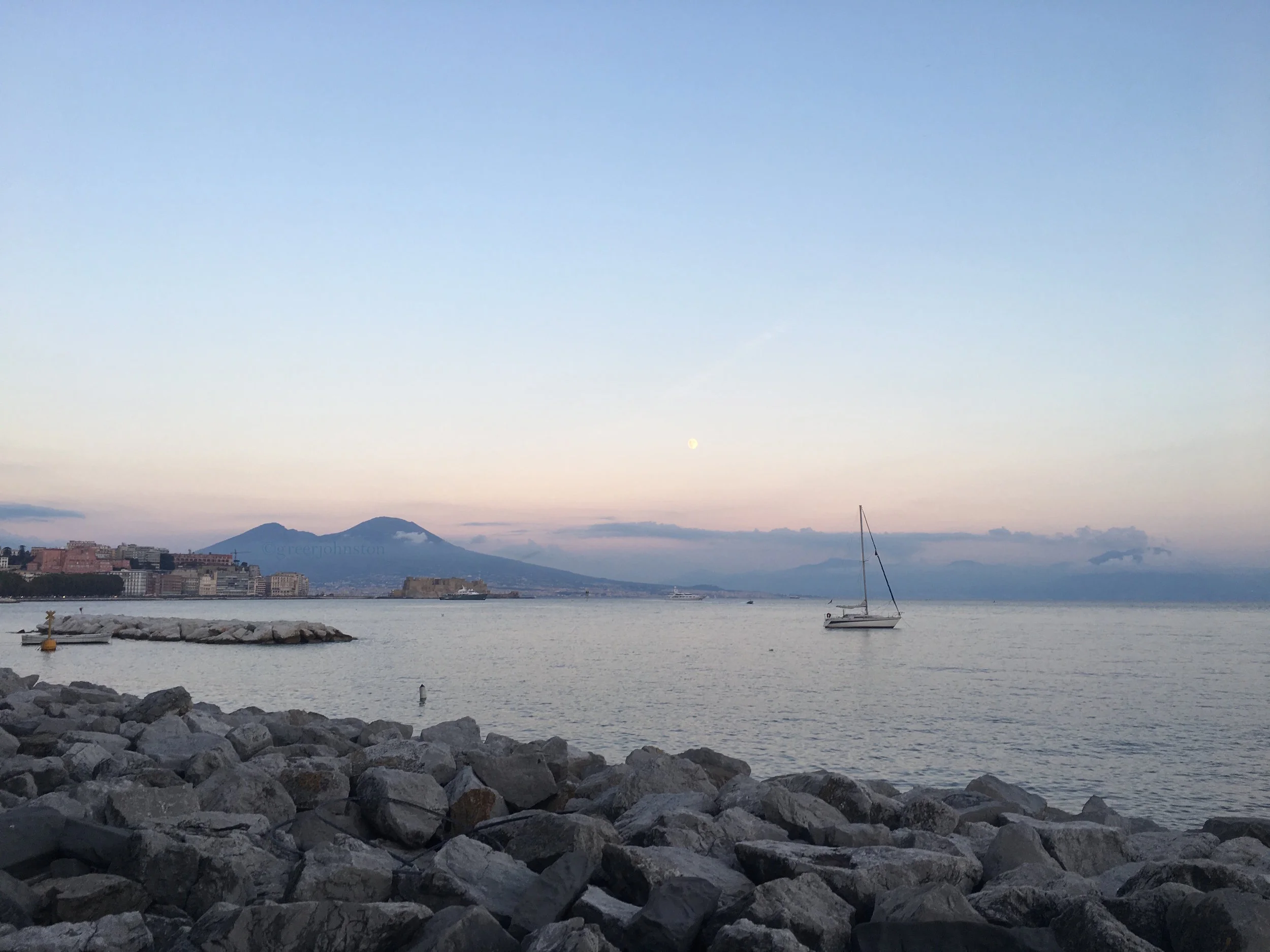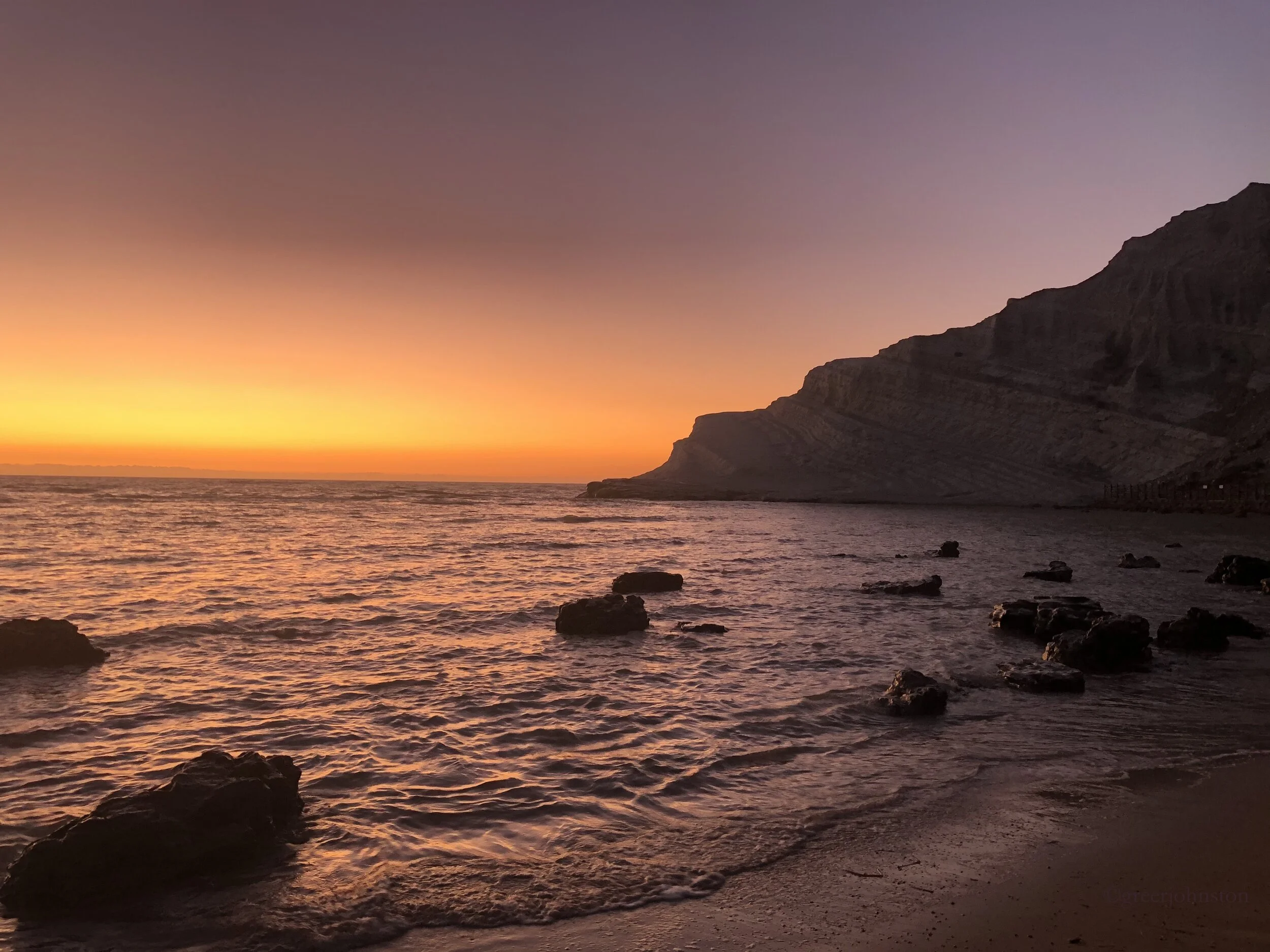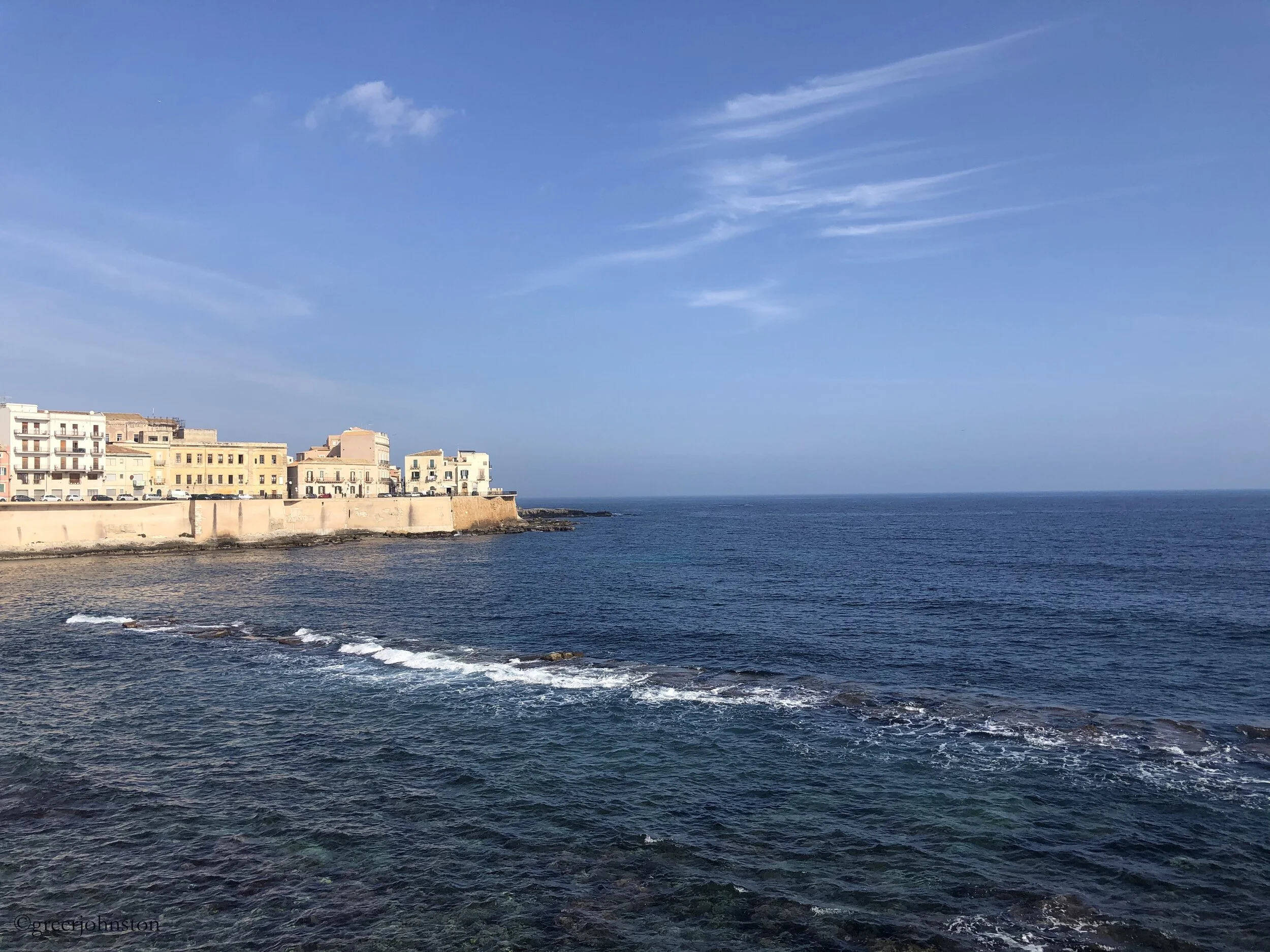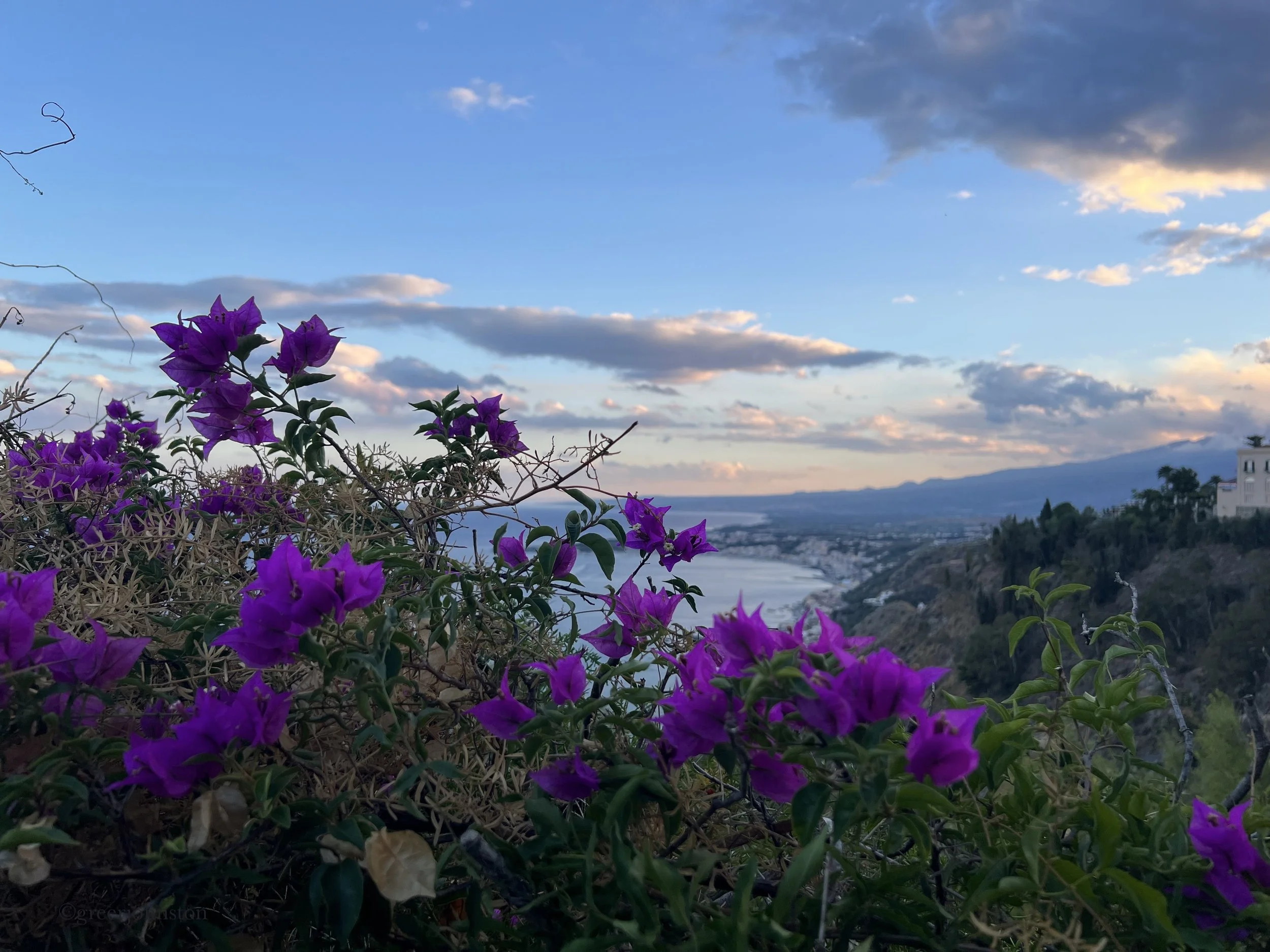Agrigento
Sicily has so many treasures. You can easily spend weeks driving around the island, if you have the time. For Sicily is a place where you want to take your time. I found this true when I visited Agrigento, commonly used to refer to the remains of the former Greek city from the BC days, and the modern city. The modern city, of course, being centuries old in its own right.
Take your time in Agrigento, and you can visit it in one day, especially if you are traveling by car. I used the public bus, took my time, and still saw so much. I chose to focus my visit on the La Valle dei Templi, considered the main attraction.
The Tempio di Ercole, one of the many treasures in La Valle dei Templi
After disembarking from the train at Agrigento Centrale, I walked to Piazza Rosselli, where I found the bus station. Look at the signs in front of where the buses are parked to find the urban line. Each line usually leaves around once an hour, so timing is everything. You can buy the bus ticket on board, or beforehand in a tabbachi. There are a few routes you can take, but without really planning, the way I took worked out perfectly.
When I arrived in Piazza Rosselli, I didn’t see an urban bus, only the cross-country buses. I panicked, and backtracked to the tourist information office I had passed, only to be told that I had in fact been in the right place. When I arrived back, I found Bus 2/ waiting (yes it’s Bus 2/; Bus 2 has a different route). I ran to it! This bus dropped me off at the entrance by the Tempio di Giunone, or the Temple of Juno (Hera). If you want to also visit the Archaeological Museum (which I did not, so I cannot comment), you can buy a combined ticket for a reduced price. And so I began my journey into the past.
The impressive Tempio di Giunone
I love walking around archaeological sites. How these ancient stones have survived centuries of rain, war, sun, and modernization. At what point did they fall from use, to being repurposed, to being preserved? After taking in the Tempio di Giunone from all angles, I admired the next temple, the Tempio della Concordia, from afar.
The stunningly well-preserved Tempio della Concordia, and modern-day Agrigento in the background
They look to be close on the map, but I was easily distracted by taking pictures of fortifying walls, the remains of ancient tombs, and olive trees so it took me a while to reach the Temple of Concordia. This temple is incredibly well preserved, and features a statue by the late Igor Mitoraj of Icarus, after his fall.
After the Temple of Concordia, I saw the exit, and became a little nervous. I knew there were more temples. No worries. The Valley of the Temples is a straightforward path, as long as you know what you are looking for. When you see the road, and after you have passed a grand contemporary house on your left, there is a path so that you may veer to the left. You will quickly find the Tempio di Ercole, or the Temple of Hercules. A row a freestanding columns stands as a testament to the past, and you can wander amidst their fallen counterparts that lay around, which gives you a sense of just how grand these temples once were.
Important to note: take this footbridge from the Tempio di Ercole which crosses the street to continue your visit within the park.
Behind the Temple of Hercules, you will find a footbridge that crosses the street. The next site you visit is the immense monumental complex of the sanctuary of Zeus. This area is large, and you can walk around it for a good amount of time, but just be sure to return to the main path after exploring to continue your visit.
The monumental complex includes the altar of the Temple of Zeus
The remains of the Tempio dei Dioscuri
The last temple was perhaps my favorite. The Tempio dei Dioscuri, (also known as the Tempio di Castore e Polluce, or the Temple of the Dioskouroi). Only one corner still stands, along with the foundation, and it’s enduring fragility mesmerized me. Here, you have reached the end. There is the exit of Porta V, and you will leave the ancient city where an ancient door once stood, following in the footsteps of the ancients. Like I said, the buses only run about once an hour, and I caught Bus 1 back into town. You must totally exit and go to the main road, where you will see the signs for the bus stop. Don’t panic if the bus is late, but if you’ve been waiting for more than an hour and have not seen a bus, there are also taxis waiting by the exit.
There was a cafe open between the Tempio di Giunone and the Tempio della Concordia, but I had brought my own snacks just in case and had bought a bottle of water from the vending machine at the entrance. I took my time, stopping often for a snack and to reflect. Even with stopping to take a few hundred photos, I made it through the Valley in about three hours.
Olive trees grow amidst centuries-old ruins
If you visit Agrigento, my recommendation beyond visiting La Valle dei Templi would be to do some research. Perhaps you would like to see the historic sights in the modern city, or check out the Archeological Museum. I didn’t do much sightseeing, but I did stay overnight at a cute bed and breakfast in the center, B&B Marchese Sala. I had apertivo at Cafégirasole, and then for dinner one of my favorite pasta dishes, pappardelle con funghi porchini, at Pititto. Whether for a day trip or a weekend getaway, Agrigento is beautiful retreat.

